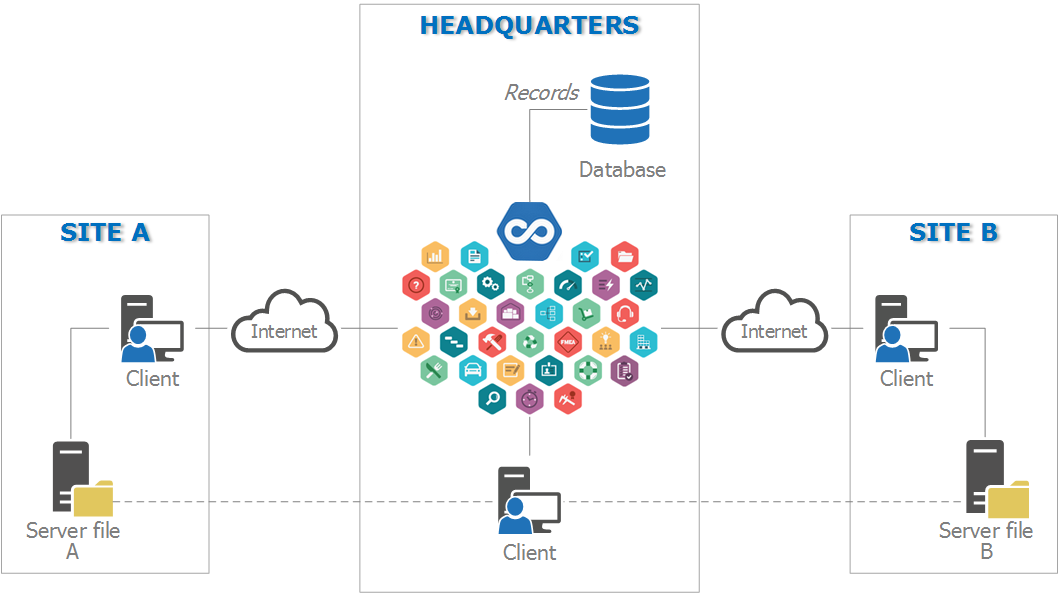Persistence layer



Persistence layer |



|
|
The persistence layer is used by SoftExpert Suite as a repository for information, storing and viewing records through the use of a database manager. In addition to storing the system records in a database, SoftExpert Suite may be configured to store documents and electronic files in a database, file server, or external server. See below the list of the main advantages of each document storage type:
DatabaseThe main advantage of storing documents in a database is the centralization of all system information in a single location, thus making it easier to back up, manage, and monitor this information. In addition to that, there is no need for various backup routines.
File serverSoftExpert Suite allows parameterizing the document and attachment storage in a directory, which only SoftExpert Suite has the permission to read and write in. That allows greater security since users do not interact directly with the documents stored in the file server. The advantage of storing documents and attachments in a directory is not overloading the database with great volumes of information, enabling the reduction of costs with storage devices, since it does not need highly optimized access time, as in the storage devices used by the database.
External or distributed servers are used when a branch of a company needs to store very large documents, such as engineering projects and blueprints. In that case, all the control is performed through an application developed in Java, which is installed in the branch file server. For that, the user must have access to the external server.
External or distributed servers allow the client to access documents in different geographic areas, speeding up the viewing of electronic files in the environment they are used the most. In that case, a file from an external server is not saved temporarily in the web server, but downloaded directly to the user’s workstation. That way, traffic will not occur between the web server and the user workstation, but between the external server and the workstation.
 Picture 2 - Scenario using an external file server
This diagram shows that the user of the Matrix is able to access the files of the Site A and Site B because the user has access to those servers.
Also refer to the following subtopics:
|